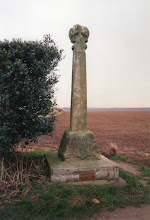
I have yet to paint the shields but the figures are largely as I mean to use them apart from that. They have recovered from a near disaster while varnishing them when I applied the Army Painter matt varnish and they came out like they had a layer of frost over them - with much of the painting detail apparently lost.
A quick look at TMP forum and Fanaticus told me that I had sprayed them in conditions of too-high humidity. It was raining when I sprayed them on the porch and then I let them dry in the laundry with a dryer going - what was I thinking! I managed to recover them with a spray of the matt acrylic picture varnish I had always used previously - this seemed to reduced the frosting almost to nil.
This is also my first slap-dash attempt at miniature photography.

The Picts were blooded last week in an encounter with the Late Imperials Romans. I deployed with a steep hill on my left flank, another just forward of my right flank and dead ahead a gentle hill - behind which the legionaries were awaiting me. On my left flank I deployed a body of 3 x spear and 2 x psiloi on the crest of the steep hill. two light horse were positioned in the centre (with LCh general behind) ready to dash up the valleys between the hills and the right flank. The rest of the centre and right flank was made up of the remaining spear and psiloi.

The Romans pushed forward on my left flank with cavalry, knights, and light horse encouraging me to leave the spear and psiloi on the hill while the spear and psiloi on my centre/right advanced towards the gentle hill with light horse to cover their flanks. The legionaries and auxilia facing my centre and right (refused flank) would not be drawn out as I had hoped - ultimately causing me to over-extend my force on the right. Once I separated my two bodies of spear to a degree they could not be quickly reunited, the legionaries fell on me and defeated me 4-0. Many silly mistakes were made but it was an enjoyable encounter.
For my next trick I'll learn how to use photos on this blog!







